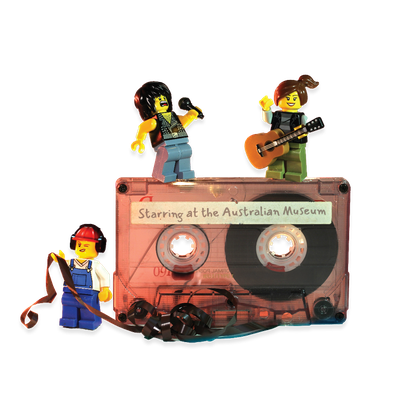Your search returned 2817 results
By Page Type
By Tag
- fish (966)
- blog (696)
- fishes of sydney harbour (401)
- First Nations (298)
- Blog (236)
- AMRI (169)
- archives (164)
- Eureka Prizes (146)
- Aboriginal and Torres Strait Islander (135)
- insect (126)
- Ichthyology (124)
- geoscience (109)
- minerals (102)
- climate change (99)
- podcast (94)
- Fish (91)
- Anthropology (89)
- International collections (80)
- Minerals Gallery (78)
- wildlife of sydney (78)
- Labridae (77)
- frog (74)
- gemstone (70)
- photography (66)
- history (63)
- Mollusca (60)
- gem (59)
- staff (59)
- Birds (56)
- Gems (56)
- Indonesia (56)
- education (55)
- shark (55)
- AMplify (54)
- people (53)
- earth sciences (50)
- exhibition (50)
- past exhibitions (50)
- Gobiidae (48)
- sustainability (46)
- Pomacentridae (45)
- Serranidae (44)
- lifelong learning (42)
- science (42)
- Earth and Environmental Science (41)
- Syngnathidae (41)
- Ancient Egypt (40)
- Bali (40)
- bird (40)
- dangerous australians (40)
-
Plectaster decanus (Müller & Troschel, 1843)
https://australian.museum/learn/animals/sea-stars/sydney-seastars/plectaster-decanus-mller-troschel-1843/Facts about Plectaster decanus a seastar of the Sydney Region.
-
Parvulastra exigua (Lamarck, 1816)
https://australian.museum/learn/animals/sea-stars/sydney-seastars/parvulastra-exigua-lamarck-1816/Facts about Parvulastra exigua a seastar of the Sydney Region.
-
Nepanthia belcheri (Perrier, 1875)
https://australian.museum/learn/animals/sea-stars/sydney-seastars/nepanthia-belcheri-perrier-1875/Facts about Nepanthia belcheri a seastar of the Sydney Region.
-
Meridiastra calcar (Lamarck, 1816)
https://australian.museum/learn/animals/sea-stars/sydney-seastars/meridiastra-calcar-lamarck-1816/Facts about Meridiastra calcar a seastar of the Sydney Region.
-
Luidia australiae Döderlein, 1920
https://australian.museum/learn/animals/sea-stars/sydney-seastars/luidia-australiae-dderlein-1920/Facts about Luidia australiae a seastar of the Sydney Region.
-
Bollonaster pectinatus
https://australian.museum/learn/animals/sea-stars/sydney-seastars/bollonaster-pectinatussladen-1883/Facts about Bollonaster pectinatus a seastar of the Sydney Region.
-
Astrostole rodolphi (Perrier, 1875)
https://australian.museum/learn/animals/sea-stars/sydney-seastars/astrostole-rodolphi-perrier-1875/Facts about Astrostole rodolphi a seastar of the Sydney Region.
-
Astropecten polyacanthus (Müller & Troschel, 1842)
https://australian.museum/learn/animals/sea-stars/sydney-seastars/astropecten-polyacanthus-mller-troschel-1842/Facts about Astropecten polyacanthus a seastar of the Sydney Region.
-
Blue Bird of Paradise
https://australian.museum/about/history/exhibitions/birds-of-paradise/blue-bird-of-paradise/Blue Bird of Paradise, Scientific name: Paradisaea rudolphi
-
Twelve-wired Bird of Paradise
https://australian.museum/about/history/exhibitions/birds-of-paradise/twelve-wired-bird-of-paradise/Twelve-wired Bird of Paradise, Scientific name: Seleucidis melanoleuca
-
Discover more
2025 Australian Geographic Nature Photographer of the Year
Special exhibition
Free entry
Now open -
Discover more
Unfinished Business
Special exhibition
Free entry
Now open -
Discover more
Wansolmoana
Permanent exhibition
Free entry
Open daily -
Find out more
Burra
Permanent kids learning space
Free entry
10am - 4.30pm![]()
-
Discover more
Minerals
Permanent exhibition
Free entry
Open daily![]()




